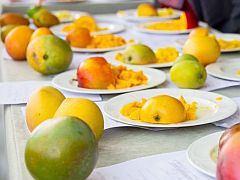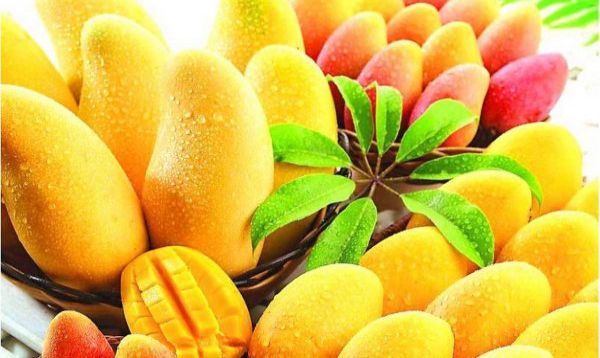Puerto Vallarta, Jalisco, Mexico - Join the Jay Sadler Project A.C., Club Rotario Puerto Vallarta A.C. and Sister City Highland Park, Illinois, as they raise money for various charities with the juiciest event: the 2nd Puerto Vallarta Mango Festival, set to be held at Lazaro Cardenas Park on Saturday, July 7th from 4:00 to 10:00 pm.
Come out and celebrate the sweetest produce of the summer - mangoes! - while enjoying various dishes made with the 'King of Tropical Fruit' provided by local restaurants and vendors, complemented by free live entertainment that starts at 5:00 pm with the Orquesta Escuela de Puerto Vallarta, followed by Hired Guns at 6:00, Da Crew at 7:00, Jose Carlos Olvera at 8:00 and Alan Vallejo Garcia at 9:00 pm.
 |
If you think you know a thing or two about this delicious fruit, think again. A visit to the festival will heighten your appreciation for what can be done in the name of mangoes. Try many dessert treats incorporating this Puerto Vallarta staple. See if you agree with who dishes out the best Mango cobbler, a dessert typical of the region.
So far, participating vendors include: Bahía de Banderas, Bar La Playa, El Torito, Escondida's Sports Bar, Gringo Loco, Horizonte de Paz, India Gate, La Sandería, Los Muertos Brewing, Mama Sirena, Murphy's Irish Pub, Nacho Daddy, PV Cup Cakes, R.I.S.E., Savvy & Well, The Green Place, Tomatlán and Vallarta Botanical Gardens. More are expected.
Some of the more than 20 mango dishes to be featured are: Wings and draft beer, Pizza and draft beer, Cupcakes, Baked goods, Popsicles with and without vodka, Empanadas, Chicken and more.
If you are interested in participating or volunteering, please go to JaySadlerProject.com. Click on 'Contact' and send us an email if you would like to participate, or click on 'Volunteers' and fill out the form if you would like to volunteer to help out as needed during this community event.
Did you know?
Ask any Mexican to name his or her favorite fruit, and chances are the answer will be el mango. From very early spring until late summer, mangoes are everywhere: stacked into symmetrical "mountains" in the markets, sold in the street on sticks, with the flesh cut to resemble flower petals, or in large glass jars in a spicy vinaigrette.
 |
But such was not always the case. Mangos, like another Mexican favorite, rice, are indigenous to Asia, especially India, where they have been so basic a part of the diet for 4,000 years that the Sanskrit word for mango, am, means "provisions." From India, the fruit spread throughout the Far East, and was first brought to Mexico in 1775 by the Spanish galleons that regularly crossed back and forth from the Philippines to Acapulco.
A century later, they were introduced to the Gulf coast area from the British Antilles through the port of Veracruz, an area that is famous for the mango variety most prized by Mexicans, the Manila. The word "mango" is an adaptation of the Tamil name for the fruit, which is mang-kay.
Sinaloa, Nayarit, Jalisco, Michoacan, Veracruz and Chiapas are Mexico's most important mango growing and exporting states. Mexico has been the biggest exporter of mangoes worldwide for several years, being only slightly edged out by China some years. (India is the world's largest producer of the fruit, but consumes a great deal of it nationally.)
The most widely grown varieties in Mexico are the Manila, a small, flat, green-to-yellow mango with a point called a beak at one end; the criollo or petacon, a large, sweet, round, reddish-orange version of the fruit; the Tommy Atkins and the Kent, very large, highly perfumed fruit, sometimes growing nearly to the size of small melons. These last two are called "Floridas" by Mexican growers, after the US state where they were first developed.
For more information, email dennis2rike(at)hotmail.com or call 322-138-8891.


